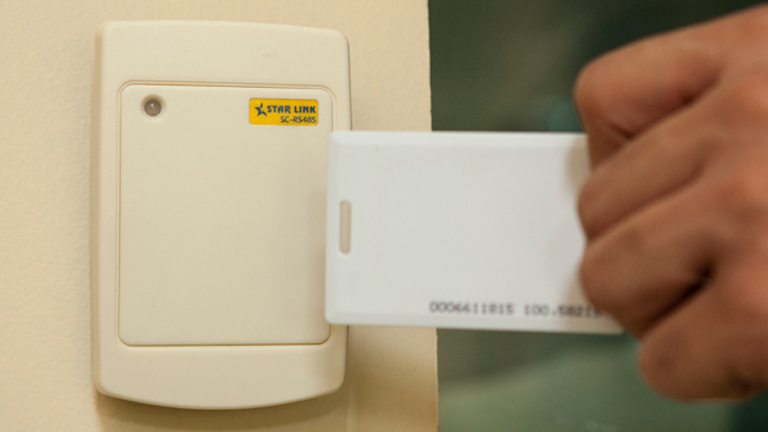24x7x365 Support No. 011-40848888 (Except National Holidays)
24x7x365 Support No. 011-40848888 (Except National Holidays)

Posted On: January 14, 2016
/Categorized In: Biometric Devices / Biometric News & Updates / Biometric Technology
/Written By: Starlink
RFID stands for Radio Frequency Identification. It is a generic term used for technology that uses radio waves to automatically (contactless) identify people or objects. This card contains microchip connected to an antenna. The microchip usually stores the data or generally, it contains a Unique Serial Number (UID), whereas antenna converts electromagnetic waves to electrical power/signal and receive waves from the reader. The chip with antenna together is called RFID transponder or RFID tag.
An RFID system consists of a tag, which is made up of a microchip with an antenna, and an interrogator or reader with an antenna. The reader sends out electromagnetic waves. The tag antenna is tuned to receive these waves. A passive RFID tag draws power from field created by the reader and uses it to power the microchip’s circuits. The chip then modulates the same waves using ASK (Amplitude Shift Keying) and reader demodulates signals and converts to digital data and in response, reader modulates the same wave and tag demodulates. So in this way, half duplex communication takes place in the same wave.
There are basically two types of Tags or RFIDs – Read-only and Read-Write.
Read-only microchips have information stored on them during the manufacturing process. The information on such chips can never been changed.
Read-write tags usually have a serial number (UID) that can’t be written over. Additional blocks of data can be used to store more information about the items the tag is attached to.
Whenever we use any technology, the security is the major concern that should be kept in mind. So in the case of RFID cards, a cryptography engine is used that prevents it from the illegal reading of information. Challenge Response Authentication is commonly used to foil repeated transfer of messages between tag and readers, preventing repeated transmission. For more reliability, CRC (Cyclic Redundancy Check) is used.
Depending on the use and applications, a number of organizations have set different parameters and protocols. These organizations include ISO, IEC, ASTM International, DASH7 alliance and EPC global.
Out of numerous protocols and standards we use ISO/IEC 14443. This standard is a popular HF (13.56 MHz) standard for HF RFID which is being used as the basis of RFID-enabled passports under ICAO 9303. The Near Field Communication standard that lets mobile devices act as RFID readers/transponders is also based on ISO/IEC 14443.
Depending on the application, three major frequency ranges for RFIDs are there. They are Low frequency, High Frequency (HF) and Ultra High Frequency (UHF).
LF are in the range of 125-200 KHz, HF – 13.56 MHz and UHF – 850-900 MHZ.
But in our application of Attendance System and Access Control, we use LFIDs and HFIDs.
Now let us discuss, how we use this RFID tag and incorporate our technology. Basically, the information of the employee like the fingerprint template or other information is written in it. After that, any employee can use this card as his identity, only he has to show this to the device installed. This method is very effective and efficient in the companies with larger employee strength. Helps the Management to save a lot of time and money as well.
Checkout our other products:
